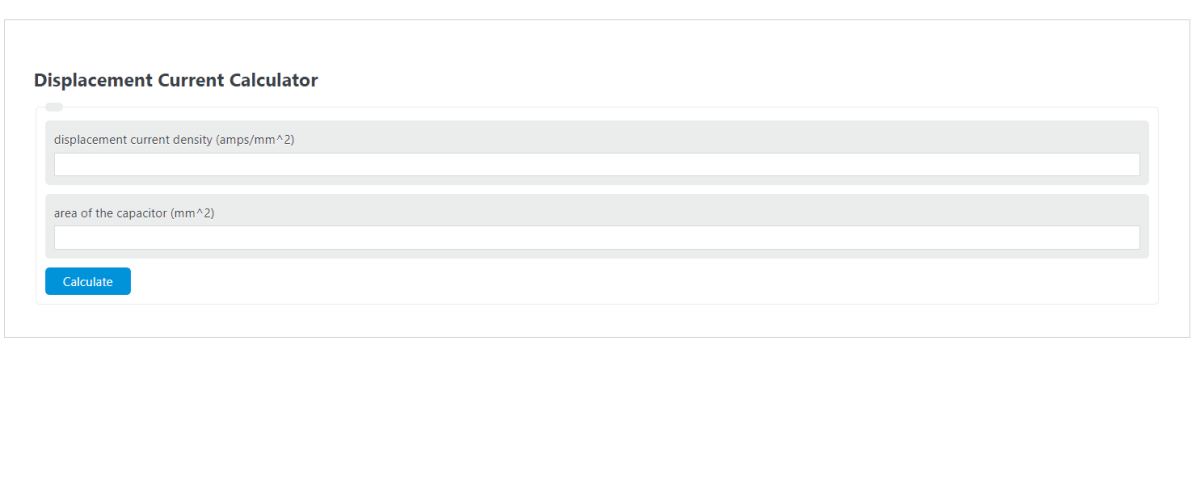Enter the displacement current density (amps/mm^2) and the area of the capacitor (mm^2) into the calculator to determine the Displacement Current.
- All Electrical Calculators
- Current Density to Current Conversion Calculator
- Current Density Calculator
- Capacitor Charge Current Calculator
Displacement Current Formula
The following formula is used to calculate the Displacement Current.
Id = Jd * S
- Where Id is the Displacement Current (amps)
- Jd is the displacement current density (amps/mm^2)
- S is the area of the capacitor (mm^2)
To calculate the displacement current, multiply the displacement current density by the area of the capacitor.
How to Calculate Displacement Current?
The following two example problems outline how to calculate the Displacement Current.
Example Problem #1:
- First, determine the displacement current density (amps/mm^2). In this example, the displacement current density (amps/mm^2) is measured to be 20.
- Next, determine the area of the capacitor (mm^2). For this problem, the area of the capacitor (mm^2) is calculated to be 31.
- Finally, calculate the Displacement Current using the formula above:
Id = Jd * S
Inserting the values from above and solving the equation with the imputed values gives:
Id = 20*31 = 620 (amps)
FAQ
What is displacement current and how does it differ from conduction current?
Displacement current refers to a kind of current that occurs in dielectric materials when the electric field within the material changes over time. Unlike conduction current, which flows through conductors as a result of a potential difference and involves the movement of electrons or other charge carriers, displacement current does not involve actual charge movement. Instead, it is a result of the changing electric field in a capacitor’s dielectric, which can create a magnetic field similar to that created by conduction current.
Why is the concept of displacement current important in electromagnetism?
The concept of displacement current is crucial in electromagnetism because it completes Maxwell’s equations, allowing them to accurately describe how electric and magnetic fields are generated and interact. Before the introduction of displacement current, Ampère’s law (which describes the magnetic field generated by a current) could not account for the magnetic field generated in situations where there is a changing electric field but no physical current. By including displacement current, Maxwell’s equations can describe electromagnetic waves, such as light, and how they propagate through different media.
Can displacement current be measured directly, and if so, how?
Direct measurement of displacement current is challenging because it does not involve physical charge carriers moving through a conductor. However, its effects can be measured indirectly through the magnetic field it generates. By using devices such as a Rogowski coil or by measuring the magnetic field around a capacitor with a changing voltage, scientists can infer the presence and magnitude of displacement current. Additionally, the effects of displacement current are critical in the design and operation of high-frequency circuits and devices, where its presence can significantly affect how these systems behave.
